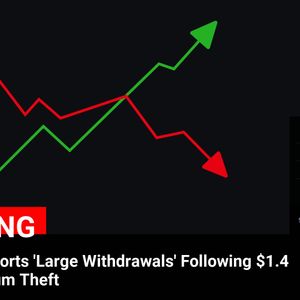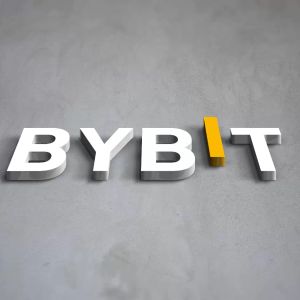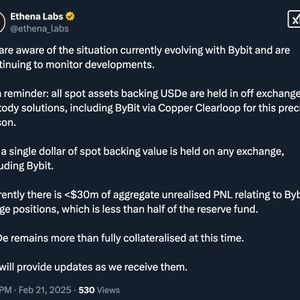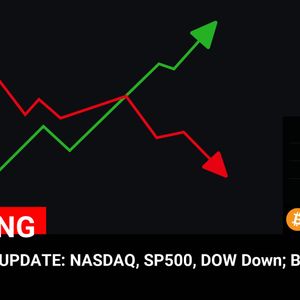In the ever-turbulent world of cryptocurrency, where new digital assets emerge daily and memecoins capture fleeting internet fame, some platforms are prioritizing stability and security over rapid expansion. Robinhood, a popular investment and trading platform, is firmly planting its flag in the ground, emphasizing a strict crypto listing process . Johann Kerbrat, Robinhood’s Vice President and General Manager of Crypto, recently shed light on the company’s meticulous approach at Consensus Hong Kong 2025, signaling a commitment to quality over quantity in their digital asset offerings. This revelation comes at a crucial time, as the crypto market grapples with volatility and the persistent allure of speculative memecoins. Let’s dive into what makes Robinhood’s strategy stand out and what it means for the future of crypto investment. What Makes Robinhood’s Crypto Listing Process So Strict? Robinhood currently supports 22 crypto assets, a relatively small number compared to some exchanges boasting hundreds, if not thousands, of listings. Kerbrat’s statements at Consensus Hong Kong underscore that this isn’t a matter of capability, but rather a conscious choice driven by stringent evaluation criteria. According to Odaily’s report, the core pillars of Robinhood’s crypto listing process are: Security First: This isn’t just a buzzword for Robinhood. Security is paramount. They meticulously assess the security infrastructure of each potential crypto asset to protect users from vulnerabilities and potential exploits. This includes evaluating the underlying blockchain technology, smart contract audits, and the overall security practices of the project team. Liquidity Assurance: Beyond security, liquidity is a critical factor. Robinhood ensures that listed assets have sufficient trading volume and market depth. This is crucial for users to be able to buy and sell assets efficiently and at fair prices, minimizing slippage and ensuring a smooth trading experience. These two factors – security and liquidity – form the bedrock of Robinhood’s decision-making. It’s a calculated approach that prioritizes user safety and market integrity over simply chasing listing numbers. Why Focus on Crypto Security and Liquidity? In the volatile crypto landscape, the emphasis on crypto security and liquidity is not just prudent, it’s essential. Let’s break down why these aspects are so critical: Factor Importance Impact on Users Security Protects against hacks, exploits, and theft. Ensures the integrity of user funds and data. Safeguards investments and personal information. Builds trust in the platform and the listed assets. Liquidity Enables smooth and efficient trading. Reduces price volatility and slippage. Allows users to buy and sell assets quickly at desired prices. Provides a stable and reliable trading environment. Ignoring these fundamental aspects can lead to significant risks for investors. Platforms that rush to list assets without proper due diligence may expose their users to: Security Breaches: Vulnerable smart contracts or blockchain networks can be exploited, leading to loss of funds. Market Manipulation: Illiquid markets are more susceptible to manipulation, where large players can easily sway prices to the detriment of smaller investors. Rug Pulls and Scams: Lack of thorough vetting can allow fraudulent projects to get listed, leading to devastating losses for unsuspecting users. Robinhood’s cautious approach is a deliberate countermeasure to these risks, aiming to create a safer and more reliable environment for crypto trading. Memecoin Hype vs. Real Crypto Adoption: Where Does Robinhood Stand? Kerbrat directly addressed the elephant in the room – memecoins. He acknowledged their ability to generate significant buzz and community discussion. However, he astutely pointed out that the crypto narrative shouldn’t be solely dominated by fleeting trends. There’s a broader, more substantial story unfolding in the crypto space, one that involves the increasing Ethereum Solana adoption and the robust institutional interest in stablecoins. While memecoins capture headlines with their viral nature and potential for quick gains (and equally rapid losses), Kerbrat emphasizes the importance of recognizing the underlying technological advancements and real-world applications driving crypto adoption. Assets like Ethereum and Solana are not just speculative tokens; they are platforms enabling decentralized applications (dApps), powering NFTs, and facilitating the growth of Web3. Their value proposition extends far beyond internet memes and social media trends. Furthermore, the “strong institutional demand for stablecoins” highlights a crucial aspect of crypto maturity. Stablecoins, pegged to fiat currencies like the US dollar, provide a bridge between traditional finance and the crypto world. Institutional investors, often seeking stability and regulated exposure, are increasingly turning to stablecoins as a gateway into the digital asset market. This institutional interest signals a deeper, more sustainable form of crypto adoption beyond the retail-driven frenzy around memecoins. Robinhood’s Crypto Asset Selection: A Curated Approach While Robinhood hasn’t explicitly disclosed the entire list of its 22 supported cryptocurrencies in this context, their selective approach is evident. By prioritizing Robinhood crypto listing of assets that meet stringent security and liquidity criteria, they are curating a portfolio focused on established and fundamentally sound projects. This likely includes major cryptocurrencies like Bitcoin (BTC) and Ethereum (ETH), alongside other prominent and reputable digital assets. This curated selection stands in stark contrast to platforms that list a vast array of cryptocurrencies, many of which may be highly speculative, lack robust security, or suffer from low liquidity. Robinhood’s strategy reflects a commitment to providing users with access to a vetted and reliable set of crypto assets, aligning with a long-term vision for sustainable crypto adoption. Navigating the Future of Crypto Listings: A Balanced Perspective Robinhood’s stance on crypto listings offers valuable insights into the evolving dynamics of the digital asset market. While the allure of quick gains from memecoins is undeniable, the platform’s emphasis on security, liquidity, and real technological adoption presents a more balanced and responsible perspective. For investors, understanding these nuances is crucial for navigating the complexities of the crypto world. Here are some key takeaways: Due Diligence is Paramount: Whether you are a platform evaluating listings or an individual investor choosing assets, thorough due diligence is non-negotiable. Assess security, liquidity, and the underlying fundamentals of any crypto project. Beyond the Hype: Don’t get solely caught up in the memecoin frenzy. Recognize the value and potential of projects driving real technological innovation and adoption, like Ethereum and Solana. Institutional Signals: Pay attention to institutional trends. The growing institutional interest in stablecoins and select cryptocurrencies signals a maturing market and a shift towards more sustainable growth. Platform Choices Matter: Choose platforms that prioritize security and user protection. Robinhood’s approach highlights the importance of platform responsibility in the crypto ecosystem. In conclusion, Robinhood’s exclusive crypto listing strategy, as highlighted by Johann Kerbrat, serves as a crucial reminder that in the fast-paced and often volatile crypto market, a focus on security, liquidity, and genuine technological advancement is paramount. While memecoins may offer fleeting moments of excitement, the long-term future of crypto hinges on building a secure, reliable, and fundamentally sound ecosystem. Robinhood’s approach is a step in that direction, advocating for a more responsible and sustainable path for crypto adoption. To learn more about the latest crypto market trends, explore our article on key developments shaping Ethereum and Bitcoin institutional adoption.



















